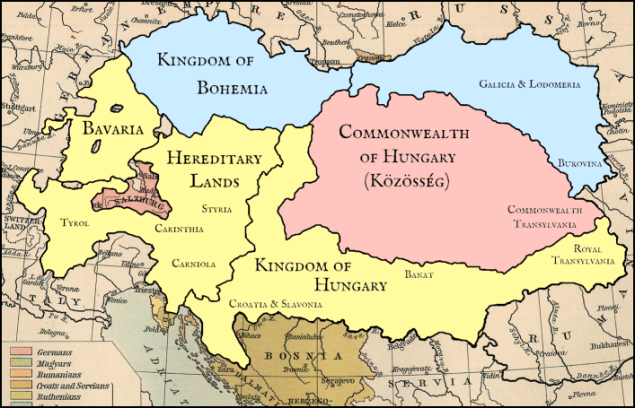Introduction
The House takes its name from Habsburg Castle, a fortress built in the 1020s in present-day Switzerland by Count Radbot of Klettgau, who chose to name his fortress Habsburg. His grandson Otto II was the first to take the fortress name as his own, adding "Count of Habsburg" to his title. The House of Habsburg gathered dynastic momentum through the 11th, 12th, and 13th centuries.
By 1276, Count Radbot's seventh generation descendant Rudolph of Habsburg had moved the family's power base from Habsburg Castle to the Duchy of Austria. Rudolph had become King of Germany in 1273, and the dynasty of the House of Habsburg was truly entrenched in 1276 when Rudolph became ruler of Austria, which the Habsburgs ruled until 1918.
The House of Habsburg was one of the most important royal houses of Europe and is best known for being an origin of all of the formally elected Holy Roman Emperors between 1438 and 1740, as well as rulers of the Austrian and Spanish Empires and several other countries. Originally from Switzerland, the dynasty first reigned in Austria, which they ruled for over six centuries. A series of dynastic marriages brought Burgundy, Spain, Bohemia, Hungary, and other territories into the inheritance. In the 16th century the family separated into the senior Habsburg Spain and the junior Habsburg Austrian branches.
The House of Habsburg was one of the most important royal houses of Europe and is best known for being an origin of all of the formally elected Holy Roman Emperors between 1438 and 1740, as well as rulers of the Austrian and Spanish Empires and several other countries. Originally from Switzerland, the dynasty first reigned in Austria, which they ruled for over six centuries. A series of dynastic marriages brought Burgundy, Spain, Bohemia, Hungary, and other territories into the inheritance. In the 16th century the family separated into the senior Habsburg Spain and the junior Habsburg Austrian branches.
As royal houses are by convention determined via the male line, technically the reigning branches of the House of Habsburg became extinct in the 18th century. The Spanish branch ended upon the death of Charles II in 1700 and was replaced by the Anjou branch of the House of Bourbon in the person of his great-nephew Philip V. The Austrian branch went extinct in 1780 with the death of Empress Maria Theresa and was succeeded by the Vaudemont branch of the House of Lorraine in the person of her son Joseph II. The new successor house styled itself as House of Habsburg-Lorraine.



